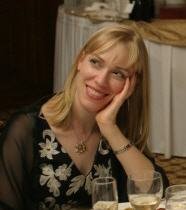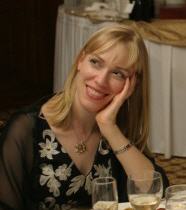Note: I've been meaning to post some of what follows for days.
Day One: On My Own
Last night, I had trouble sleeping, thinking about my first solo patrol for FLAP this morning. I am totally unsure of myself and my “skills”. Will I be able to catch the migratory songbirds? Will I cause them further harm? Will I even see them? (A former roommate once called me “the least observant person” she had ever met.) But I drag myself out of bed obscenely early this morning, because, as the great Lyle Lovett croons, “But what would you be if you didn't even try?”
And then the incredible happens. Within minutes of beginning my patrol, I see a dark lump at the base of an office tower. As I approach, I note the breeze stirring the feathers of a Brown Creeper and I initially think it can’t possibly still be alive. But as I get closer, it sees me and chirps but is otherwise helpless to move.
But to say it chirps is a disservice; I think the song of the brown creeper – even an injured one – is one of the sweetest, purest sounds I have ever heard.
My heart becomes a strange mixture of compassion and realism. I can’t imagine this bird surviving once having reached such a helpless state, but I am passionately determined to protect it from being eaten by a gull or some other kind of grisly fate.
The Brown Creeper is soon in its brown paper bag (for transport and reassurance), and I fight through the associated documentation (Which building is this, anyway???) before continuing my patrol. All too soon, I come upon a dead White-throated Sparrow. Again I plunk myself down on the cement to go through the paperwork. This time, there is a smoker standing in a nearby doorway who takes an interest in what I’m doing. Like quite a few Torontonians, he is aware of FLAP and the problem of migratory songbirds hitting windows. He tells me how a Northern Flicker tried to fly through the 10th-story window of his office just the day before, and how he saw a Yellow-bellied Sapsucker in a tree in this courtyard a week prior. Uh … I’ve heard the name of a yellow-bellied sapsucker before. Boy, this guy knows a lot more about birds than I do. I make a joke about how long it’s taking me to document this dead bird, and he encourages me by telling me I’m doing a great job. We both laugh. I place a numbered tag around the dead sparrow’s leg, and after some more friendly chatter, move along in search of more birds.
As I walk along the streets of
In the next hour, I find two more White-throated Sparrows, one alive (but again helpless) and another dead. I give both live birds to Brian, one of FLAP’s most tireless volunteers, to take to the Toronto Wildlife Centre for assessment. I don’t dare believe that either will survive, but fervently believe in the value of the efforts made to protect and save them. Oddly, I am somehow invigorated by this patrol. I don’t enjoy seeing dead or injured animals at all, but it is such a powerful experience to rescue a wounded, helpless wild animal that I am charged up, amazed, and inspired. I decide to patrol again the next day.
Day Two
Once again I am pounding the sidewalk at some god-awful time in the morning. I run into fellow volunteers Brian and Eric again today, but initially it seems like a slow day for me. It is a clear, beautiful morning, and perhaps this bodes well for the birds. I continue to briskly walk around the buildings, figuring it’s great exercise and at least I’m not bored.
Doubling back to a place I’d been only 15 minutes prior, I see a pair of White-throated Sparrows desperately flapping along a wall of windows, trying to get through. They are strong birds and seem liable to hurt themselves through this effort. As I approach, they become more frantic. Not good. I easily capture one of them in my net, but can’t get the other one with it as well without possibly hurting the first. As I focus on extracting the first sparrow from my net and putting it into a paper bag, Eric happens to walk by. I call him over and the second sparrow is easily netted and placed in a paper bag so it won’t harm itself. We hand them over for temporary storage at the local security desk and continue our separate ways.
Later, in separate instances, I find three more live birds – one in dubious condition and colder than the two additional dead birds I’ve found. In each case, I hand the birds into the local holding station for pickup by a FLAP driver. Eventually, hollow-eyed and yet feeling like I’ve never done anything more optimistic or worthwhile, I head home.
Two Days Later
I receive news that the little Brown Creeper, whose life I feared was ending, was actually examined, assessed to be relatively healthy, and released the same day into the wild near the city, as were the White-throated Sparrows (WTSP) that Eric and I captured together. The live WTSP from my first day and the cold WTSP from my second day were also examined at the Toronto Wildlife Centre and held back for treatment. I’m beginning to think that some of these birds just hit the buildings and are stunned, but would be okay if they could just be protected from predators while they regain their senses.
Day Three – a week later and after my bird-handling workshop
This morning I meet my friend Lucy, who took her introductory FLAP training last weekend but has yet to do a patrol. I try to share with her all that I have learned in the last week. At one point she remarks about how much experience I seemed to have gathered. Although I would certainly not call myself an expert in any way, it is remarkable to me how much more confident I already am compared to how I started. Maybe this is just a good fit for me. All I know is that somehow this resonates with me – perhaps there was a little heroine deep inside who was just waiting for an opportunity?
Today we find one dead Pine Warbler (still warm) and a live Chestnut-sided Warbler.
I still suck at doing the paperwork.
Lucy bought her own bird net today at lunch.


No comments:
Post a Comment